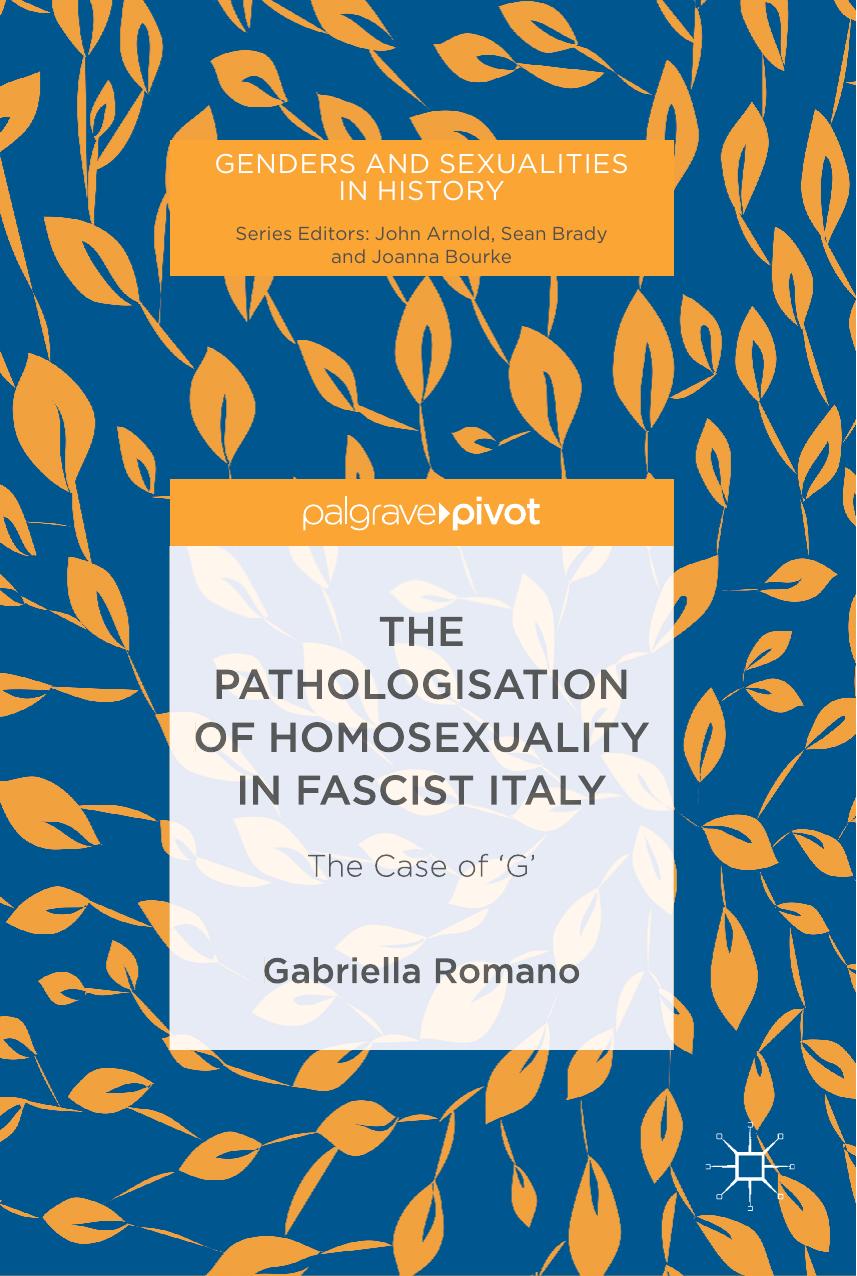The Pathologisation of Homosexuality in Fascist Italy by Gabriella Romano

Author:Gabriella Romano
Language: eng
Format: epub, pdf
ISBN: 9783030009946
Publisher: Springer International Publishing
The moralising campaign, which dated back to the beginning of the regime, now extended to all forms of entertainment, even music: jazz was a major target. Based on improvisation, it increasingly was associated with rebel attitudes and potentially immoral, promiscuous night-clubs, something that found a strong echo in the local newspapers.14 Besides, it was “foreign” and, as such, it raised suspicions just like other “imported” trends, such as Feminism, considered as quintessentially American. The country had to be self-sufficient and focus on its traditions and history. Even foreign names had to be translated and “Italianised”: Albrecht Dürer became a desolately provincial “Alberto Durero”, to quote an example taken from a magazine of November 1928.15
However, from the killing of the socialist MP Giacomo Matteotti in 1924, the repression had touched many other aspects of public and private life, and in 1926 had reached its peak: Law n. 2307, approved on 31 December 1925, aimed at “the integral fascistisation of the press”.16 The control of newspapers and magazines was a top priority and the Prefettura was given full powers to intervene when a publication was thought to be irreverent or critical of the regime. This clearly was reflected in the situation in Turin. Main newspapers and magazines in circulation in 1928 in Piedmont were La Stampa, La Gazzetta del Popolo, Il Momento, Il Piemonte, Il Primato and Il Giornale dei Combattenti: the first four were described by the Prefettura as “favourable to the current political policies”, while the latter two were said to be “even more favourable”.17 Local voices of dissent such as Ordine Nuovo, Altoparlante, La Plebaglia, Umanità Nuova had already disappeared, Il Baretti, founded by the famous Turin anti-fascist intellectual Piero Gobetti, published its last issue in Autumn 1928, La Protesta and La Riscossa would cease publication in 1929.18
In addition, several cultural associations, perceived as uncontrollable and potentially hostile to Fascism, were forced to disband: from cradle to grave, the state now offered a number of options where sport and socialisation could take place under its vigilant eye. This can be observed at a local level too. By 1928 many cultural associations in the Piedmont region had been dismantled, among them the Italian Federation of Workers of the Publishing Sector (Federazione Italiana dei Lavoratori del Libro) and the Literary Club (Circolo Letterario) in Torre Pellice, the small town where the majority of Italian Protestants lived. The latter is an unequivocal indication of the level of censorship and persecution of religious minorities that the regime had started implementing.19
As Ebner’s research shows,20 everywhere throughout Italy many osterie and trattorie, a traditional meeting place for working class people, had been forced to close, often the result of spying activities: the ones that continued to operate were full of informants ready to over-hear anti-regime comments, more easily pronounced when under the influence of alcohol. Sometimes the owners and staff had been recruited as informants, on the promise that they could continue their activity without too many bureaucratic entanglements. Hotels, identified as a primary meeting location for anti-fascists, had been regularly searched, fined or shut down.
Download
The Pathologisation of Homosexuality in Fascist Italy by Gabriella Romano.pdf
This site does not store any files on its server. We only index and link to content provided by other sites. Please contact the content providers to delete copyright contents if any and email us, we'll remove relevant links or contents immediately.
Enlightenment Now: The Case for Reason, Science, Humanism, and Progress by Steven Pinker(7272)
A Journey Through Charms and Defence Against the Dark Arts (Harry Potter: A Journey Through…) by Pottermore Publishing(4789)
The Immortal Life of Henrietta Lacks by Rebecca Skloot(4548)
A Journey Through Divination and Astronomy by Publishing Pottermore(4363)
Elon Musk by Ashlee Vance(4084)
Origin Story: A Big History of Everything by David Christian(3666)
COSMOS by Carl Sagan(3588)
Alchemy and Alchemists by C. J. S. Thompson(3481)
Bad Pharma by Ben Goldacre(3396)
Enlightenment Now by Steven Pinker(3349)
Shadow of Night by Deborah Harkness(3324)
Inferior by Angela Saini(3293)
A Mind For Numbers: How to Excel at Math and Science (Even If You Flunked Algebra) by Barbara Oakley(3256)
Origin Story by David Christian(3170)
The Code Book by Simon Singh(3136)
Signature in the Cell: DNA and the Evidence for Intelligent Design by Stephen C. Meyer(3098)
The Elements by Theodore Gray(3025)
A Brief History of Time by Stephen Hawking(2991)
A Journey Through Potions and Herbology (A Journey Through…) by Pottermore Publishing(2836)
